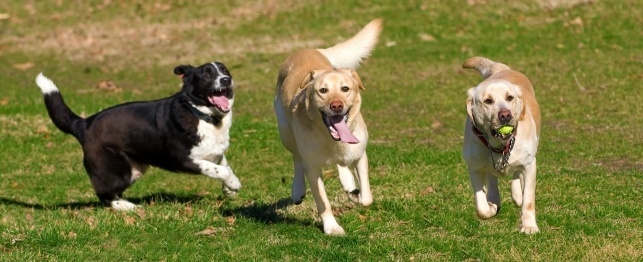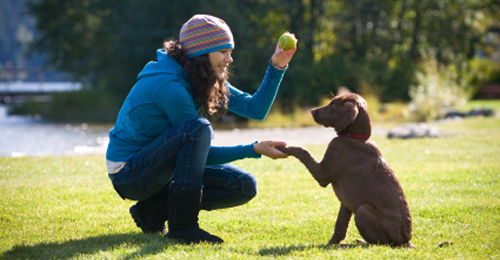It is a thing of beauty to see a dog perform his obedience routine off-lead. It appears to be magic. It is obvious to the viewer how much he wants to BE there, on the spot, by watching his owner's every move and body language, anticipating every step. Here are some tips to acheive this doggy ballet of movements.
One secret to good obedience training is never to give your dog the chance to disobey. Make sure he understands the command and what you want him to do, and move toward it with baby steps so he always ALWAYS succeeds. Your happy praise at every turn is what he lives for.
When he is at that comfortable stage on lead where he yawns at every new command, this means he is sure of it and relaxed, then it's time to move on to removing his lead. At first this creates a bit of anxiety. His lead is his only physical guide to pleasing you, his main goal. So make sure everything you are about to show him off-lead is something he knows VERY well with the lead attached.
On-lead heeling, turning and stopping is very smooth and controlled. Before starting off, instead of hooking the lead into the ring, slip the entire lead through his collar, not in the ring, and wrap the end around your hand so you can eat it up as you walk, until the lead slides completely out of the dog's collar. He will not even know, just keep walking with no change in gait or tone and act like nothing new is going on.
When you come to a stop and your dog sits predictably at your side like always, pause a moment then PRAISE PRAISE PRAISE! Your dog will look at you funny, as if to say, "What's the big deal? We do this all the time". It's quite funny. That's when you know it has worked the way it should and your dog has made the transition effortlessly.
As you work, keep the dog close at hand, you do not want him to get the idea he can run off. If he makes the slightest off move, take his collar by the live ring and tug. Remember those little tugs that he dislikes so much he learned quickly how to stay in the exact right spot? Remind him that off-lead has the same controls, so you must be vigilant. If he backslides, go back to on-lead. He will learn quickly that he prefers the independence of off-lead work and to get it he must obey your every command.
Working with the Come on a long line, go back to the short lead and leave it close so you can take it up quickly if he does not come swiftly. Give him no room to think about disobeying. Gradually extend the distance until he is coming to you at a run totally off-lead. He loves this!
If you are patient and consistent in your commands, your dog will become every bit as reliable off his lead as he was with his lead attached. Both you and your dog will enjoy it more!

 Tips for Keeping Your Dog Safe at the Dog Park
Tips for Keeping Your Dog Safe at the Dog Par
Tips for Keeping Your Dog Safe at the Dog Park
Tips for Keeping Your Dog Safe at the Dog Par
 NILIF Behavioral Shaping For Dogs
Why You Should Consider NILIF
Do you have a stubborn, pushy
NILIF Behavioral Shaping For Dogs
Why You Should Consider NILIF
Do you have a stubborn, pushy
 Secrets To German Shepherd Coaching
Keep the courses sessions short but often. When things lose
Secrets To German Shepherd Coaching
Keep the courses sessions short but often. When things lose
 Dogs Play at the Park
Dogs Play at the Park
Dogs Play at the Park
Dogs Play at the Park
 Doggie Day Care
Doggie Day Care
Doggie Day Care
Doggie Day Care